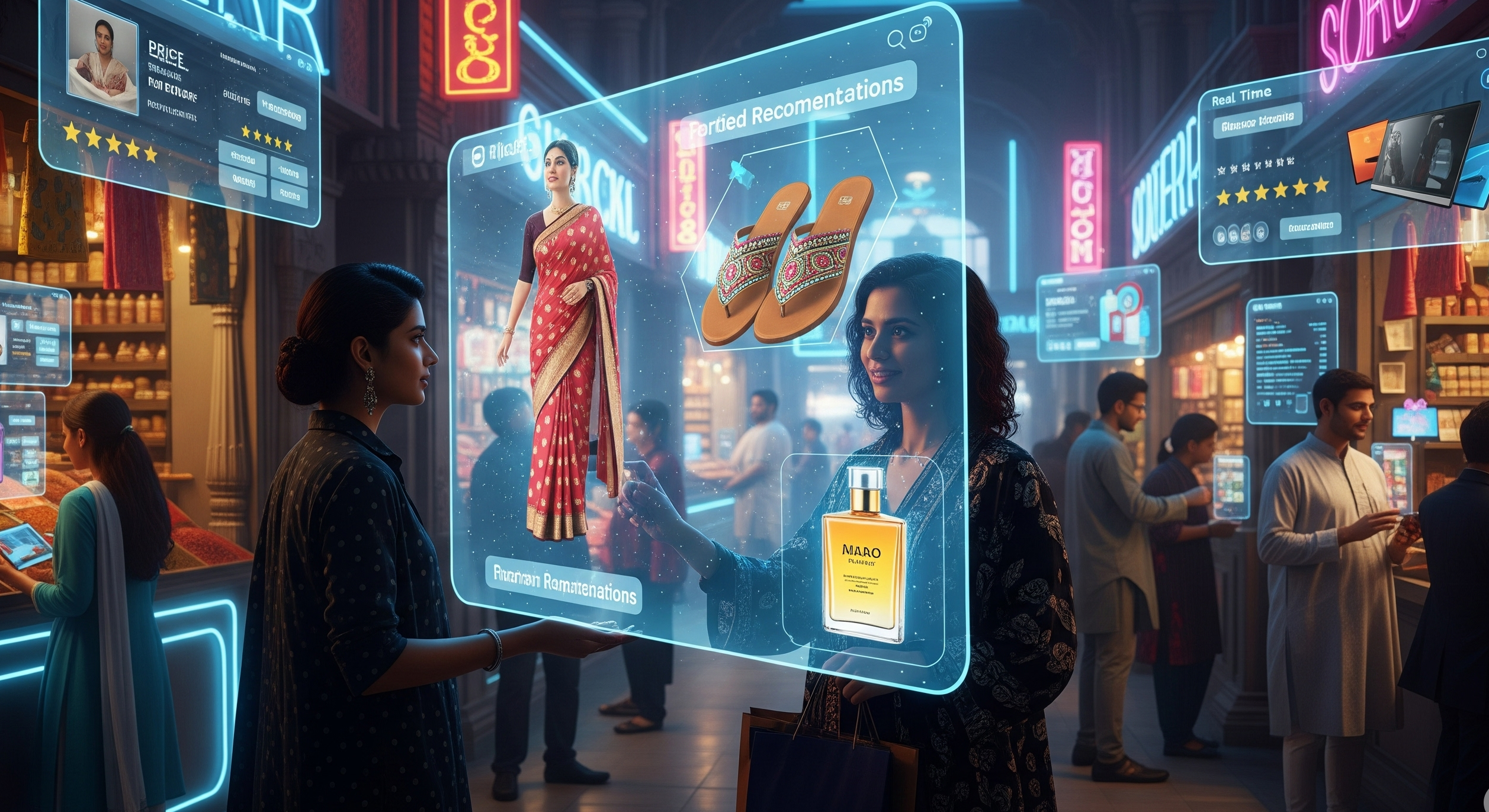Your cart is currently empty!
The Hyper-Personalization Wave: Transforming Indian E-commerce and Retail

In the bustling and diverse marketplace of India, a new wave of innovation is reshaping the e-commerce and retail landscape: hyper-personalization. Gone are the days of generic recommendations and one-size-fits-all marketing. Today, Indian consumers are demanding, and businesses are delivering, deeply tailored experiences powered by the intelligence of Artificial Intelligence (AI).
What Exactly is Hyper-Personalization?
While personalization has been around for some time (think recommending products based on past purchases), hyper-personalization takes it to a whole new level. It involves leveraging real-time data, AI algorithms, and a comprehensive understanding of individual customer preferences, behaviours, and context to deliver incredibly relevant and timely interactions. This goes beyond just recommending products; it encompasses every touchpoint of the customer journey, from the moment they land on a website to post-purchase engagement.
The Indian Context: A Perfect Breeding Ground for Hyper-Personalization
Several factors make India a prime market for hyper-personalization in retail:
- Digital Savviness: A rapidly growing and digitally engaged consumer base, comfortable with online shopping and sharing data for better experiences.
- Mobile-First Culture: The majority of online transactions happen on mobile devices, providing a rich stream of location data, app usage, and browsing behaviour.
- Linguistic Diversity: The need to cater to a multitude of languages necessitates AI-powered solutions that can understand and communicate with customers in their preferred language.
- Competitive Landscape: A crowded e-commerce market means businesses need to differentiate themselves through exceptional customer experiences.
Key Examples Leading the Charge in India
Several Indian e-commerce and retail players are already harnessing the power of hyper-personalization:
- Myntra’s MyFashionGPT: This AI-powered stylist assists users with specific fashion queries, understanding context and preferences to offer highly relevant style advice. Its success highlights the demand for personalized guidance in online shopping.
- Dynamic Pricing and Promotions: Many online retailers now use AI to adjust prices in real-time based on demand, competitor pricing, and individual customer profiles, offering personalized deals.
- Personalized Product Recommendations: Going beyond “customers who bought this also bought,” AI algorithms analyze browsing history, wishlists, purchase patterns, and even social media activity to suggest products with a high likelihood of interest.
- Tailored Content and Marketing: From personalized email campaigns featuring relevant products to website layouts adapting to individual preferences, AI is enabling marketers to deliver highly targeted and effective messages.
The Multifaceted Benefits of Hyper-Personalization
The adoption of hyper-personalization offers significant advantages for both businesses and consumers in India:
For Businesses:
- Increased Customer Engagement: Relevant and personalized experiences lead to higher time spent on site and more interactions.
- Improved Conversion Rates: Tailored product recommendations and offers significantly boost the likelihood of a purchase.
- Enhanced Customer Loyalty: Customers feel understood and valued, leading to stronger relationships and repeat business.
- Higher Average Order Value: Personalized recommendations can encourage customers to discover and purchase additional items they might not have otherwise considered.
- Optimized Marketing Spend: By targeting the right customers with the right messages at the right time, marketing campaigns become more efficient and cost-effective.
For Consumers:
- More Relevant Shopping Experiences: Discovering products they genuinely need and want becomes easier and more enjoyable.
- Time Savings: Fewer irrelevant recommendations mean less time spent sifting through products.
- Personalized Offers and Deals: Receiving discounts and promotions on items they are actually interested in.
- Better Customer Service: AI-powered chatbots can understand individual queries and provide tailored support.
- A Feeling of Being Understood: Hyper-personalization creates a sense that the business truly understands their needs and preferences.
The Road Ahead: Challenges and Opportunities
While the potential of hyper-personalization in Indian e-commerce is immense, there are challenges to address:
- Data Privacy Concerns: Businesses need to be transparent about how they collect and use customer data, ensuring compliance with privacy regulations.
- Data Silos: Breaking down data silos across different platforms and touchpoints is crucial for creating a holistic view of the customer.
- Technological Infrastructure: Implementing sophisticated AI and data analytics tools requires investment in robust technological infrastructure.
- Talent Acquisition: Skilled professionals in AI, data science, and marketing are needed to develop and manage hyper-personalization strategies.
Despite these challenges, the trajectory is clear. Hyper-personalization is no longer a futuristic concept but a present-day reality that is rapidly transforming the Indian e-commerce and retail landscape. Businesses that embrace this data-driven, customer-centric approach are poised to thrive in this dynamic and competitive market, delivering exceptional experiences that resonate with the unique needs and preferences of the Indian consumer.

Leave a Reply